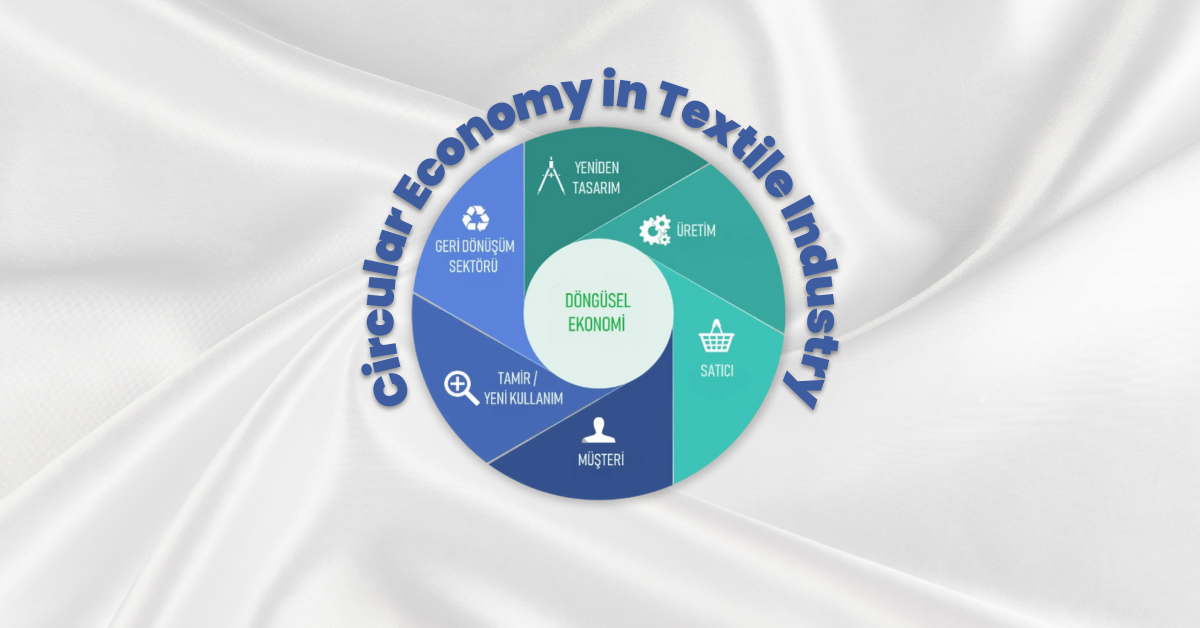A Complete Guide by Encrafter
In a world where sustainability has become a top priority, the textile industry is looking to reinvent its practices to reduce its ecological footprint. The circular economy is emerging as a promising solution, transforming the way clothing is designed, manufactured and consumed.
Understanding the Circular Economy
The circular economy represents an innovative business model that aims to eliminate waste and reduce waste by reusing, recycling and adding value to existing products. In the textile sector, this means rethinking every step of a garment's life cycle, from its design to its end of life.
At Encrafter, we strongly believe in transforming the textile industry towards more sustainable practices. In this article, we present the 7 pillars of the textile circular economy that guide our mission.
A circular textile economy is a system that aims to keep textiles in use for as long as possible. This is done by designing clothes that are durable and easy to repair, and by finding ways to reuse or recycle old clothes.
There are a number of benefits to a circular textile economy. It can help to reduce waste, conserve resources, and create new jobs. It can also help to improve the quality of textiles and reduce the environmental impact of the textile industry.
Here are some of the key principles of a circular textile economy:
- Design for durability and repairability: Clothes should be made from high-quality materials that will last for a long time. They should also be designed in a way that makes them easy to repair if they are damaged.
- Extend the life of clothes: There are a number of things that consumers can do to extend the life of their clothes, such as washing them less often and repairing them when they are damaged.
- Reuse and resale: Clothes that are no longer worn can be reused by others. This can be done through donation, resale, or clothing swap programs.
- Recycle: When clothes can no longer be reused, they can be recycled into new textiles.
1. Sustainable design
Sustainable design is the first pillar of the textile circular economy. It involves creating products that have a long lifespan and are easy to recycle. At Encrafter, we encourage our customers to use recyclable materials and responsible manufacturing processes to reduce their carbon footprint and extend the life of their garments.
2. Use of sustainable and recycled materials
Using sustainable and recycled materials is crucial. This includes natural fibres like organic cotton, linen, and wool, as well as recycled synthetic fibres like polyester and nylon. These materials reduce reliance on non-renewable resources and decrease textile waste.
3. Production as close as possible to suppliers and reduction of waste
By choosing suppliers that respect fair labour standards and reducing transportation distances, the textile industry can minimize its environmental and social impact.
Reducing waste is also a key aspect of the textile circular economy. Encrafter helps companies adopt more efficient production practices, such as cutting on demand and recycling fabric scraps, to minimise the waste generated.
4. Repair and reuse
Promoting repair and reuse helps extend the life of clothing. Repair shops, online tutorials and clothing rental services are effective ways to reduce textile waste and foster a culture of sustainability.
5. Recycling and upcycling
Recycling and upcycling are essential strategies for managing textile waste. Recycling involves transforming old clothing into new fibers or products, while upcycling involves creating higher-value items from used materials. These practices reduce pressure on natural resources and reduce waste.
At Encrafter, we help brands integrate recycling processes into their production chain and create new products from recycled materials.
6. Responsible consumption
Responsible consumption involves informing consumers about the importance of choosing sustainable and quality products. We work with companies to develop awareness campaigns and encourage second-hand purchasing behaviours.
7. Innovation and collaboration
Technological innovation and the implementation of new business models, such as clothing rental services and resale platforms, encourage a more efficient use of textile resources. Encrafter encourages partnerships between different industry players to develop innovative solutions and share best practices in sustainability.
Innovative initiatives in the textile industry
Many brands and companies are already adopting innovative circular practices:
Fiber recycling: Transforming used textiles into new fibers for the manufacture of new clothing.
Rental and sharing: Clothing rental models and sharing platforms to maximize product usage.
Upcycling: Transforming old clothes or fabric scraps into unique pieces or accessories.
Encrafter: Pioneer of circular fashion
At Encrafter, we are committed to fully integrating the circular economy into our creative process. Each collection is designed with sustainability in mind, using recycled materials and minimizing our environmental impact. Our goal is to create premium fashion that is not only beautiful and innovative, but also kind to our planet.





Comments